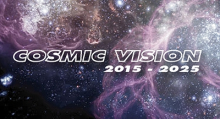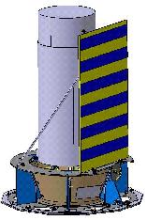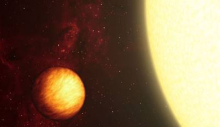RoPACS: Rocky Planets Around Cool Stars
A Marie Curie Initial Training Network
Planet Properties and ESA's Cosmic Vision
Information regarding this project is presented below
ESR/ER Researchers
UH ESR - James Frith
Project Description
This project works towards future goals to detect extrasolar planets with space-based technology such as the mission concepts proposed as part of ESA's Cosmic Vision. The position is based at UH but the ESR will also spend some periods working at Astrium and the Paris Observatory. There are 3 main components to the project. (i) Direct exoplanet measurements with current technology - high resolution tomographic techniques and adaptive optics searches will be expanded to cooler younger stars for improved exoplanet sensitivity (see Barnes et al. 2008, MNRAS, 390, 1258; Barnes et al. 2007, MNRAS, 382, 473; Clarke et al. 2008, arXiv0805, 4772). (ii) Phase-A design studies at Astrium for potential future missions, to determine what technology is viable and how science requirements can be met in the coming decade. (iii) Work in Paris on an end-to-end simulation of the space-based planet imaging concept mission SEE-COAST. The best observational/theoretical input will lead to optimal constraints on future mission science requirements.
 |
 |
 |
| ESA's "Cosmic Vision" is the European starting point for quests into the advancement in space science. Potential missions for future exoplanet studies are an important part of this initiative. | SEE-COAST is a 1.5 m class space telescope project dedicated to the characterization of exoplanets in the visible. It will be re-submitted to the Cosmic Vision process presumably in 2011, for possible launch in 2020. Picture credit: Astrium. | Artist's conception of a close-in giant planet known as a Hot Jupiter. Such planets can have temperatures of ~2000K, which can allow them to be detected with current technology. Picture credit: NASA/JPL. |
Project Supervisors
UH - D. Pinfield, J. Barnes
Astrium - C. Brown, M. Stuttard, P. D'Arrigo
Paris Observatory - J. Schneider
Other Researchers Working on Project
Mari Cruz Galvez Ortiz